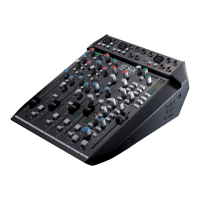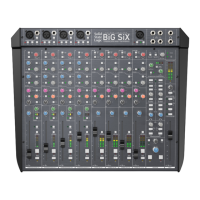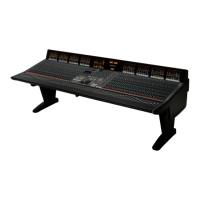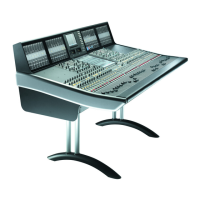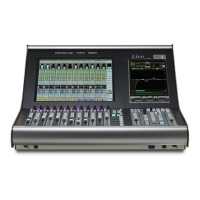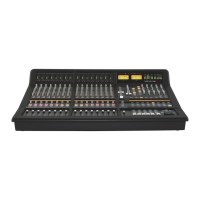The Six Key Points in the SL911J
There are six key points in each I/O module which define the two separate audio
paths: two inputs to the module, two faders and two outputs from the module. The
status buttons determine how these elements are connected together to provide
default configurations required for tackling various tasks from track laying through to
final mixdown.
The six key elements in the signal paths are:
The Channel Input
The Channel Input section can be found towards the top of the
module and has three inputs: MIC, LINE and SUBGROUP. We will
deal with the SUBGROUP input later. The FLIP button allows you to
flip between MIC and LINE inputs. All inputs can be flipped by using
the MASTER INPUT FLIP button located in the SL952J master status
button group. The other controls on the input section are fairly
obvious but are detailed in Section 3.
The Small Fader and Pan
The Small Fader is linked to the computer automation system. Its
associated pan control is mounted above and to the right of the fader.
This will normally pan between Left/Right or Odd/Even busses
unless the optional LCR panning system is fitted, in which case a
separate Centre bus is also available.
SL 9000 J Console Operator’s Manual
2-2
5.9.96
FLIP
Ø
HIGH-Z
- 20dB
SUB GP
LINE
dB
BUS
dB
dB
MIC
-30 0
20 +20
+15 +75
0
48V
SOLO
CUT
PST
LF
PRE
LF
SF
MIX
ISO
C
RL
C
LR
PAN
trim
abs
10
5
0
5
10
20
30
40
60
0
0
LF
MIX
ST

